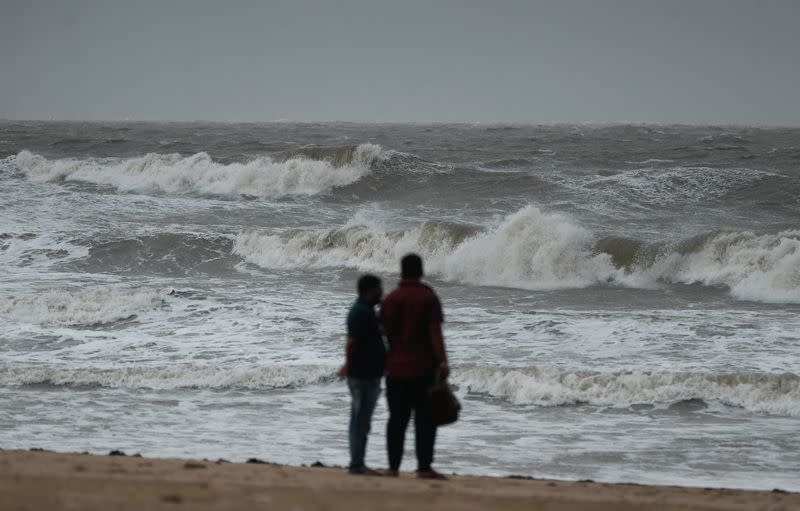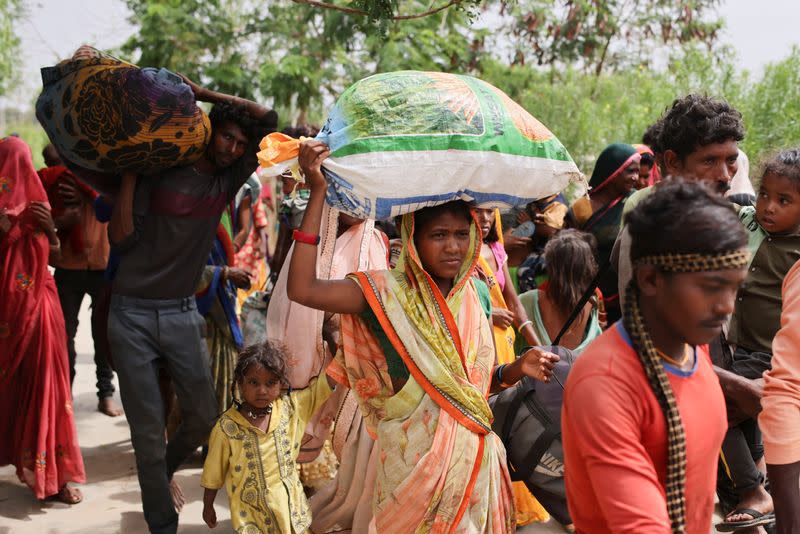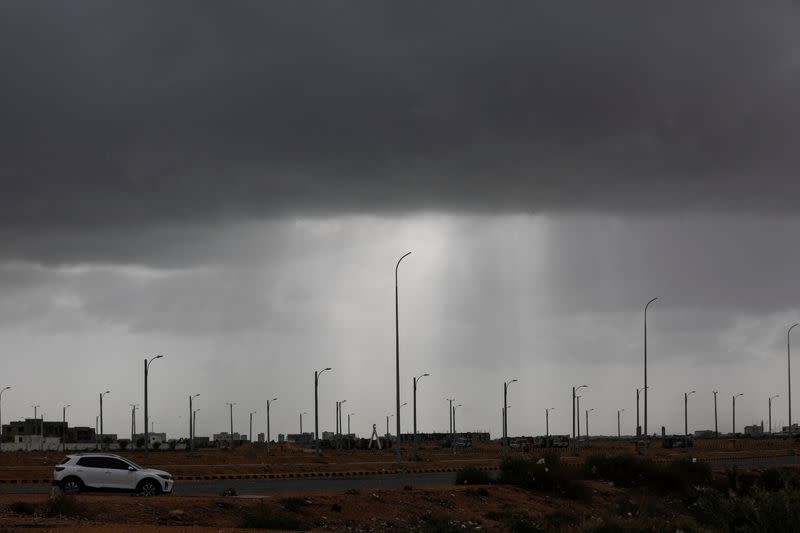Cyclone approaching India, Pakistan - what you need to know
NEW DELHI (Reuters) - A powerful cyclone, named Biparjoy, is inching closer to India and Pakistan. Here are key details regarding its landfall and the preventive measures being taken by both countries to minimise damage it may cause to life and property.
LANDFALL
The 'very severe cyclonic storm' developing over the northeast Arabian Sea is expected to make landfall between Mandvi in India's western state of Gujarat and Karachi in southern Pakistan by Thursday evening.
WIND SPEED
The cyclone is expected to have maximum sustained wind speeds of between 115-125 km (71-78 miles) per hour, gusting up to 140 km (87 miles) per hour.
CURRENT LOCATION
According to India's weather office, the storm, on Thursday morning, lay centred about 180 km (112 miles) west-southwest of Gujarat's Jakhau Port and 270 km (168 miles) south-southwest of Karachi.
FATALITIES
Seven people have died in India so far due to mishaps stemming from extreme weather conditions caused by the cyclone, including rough seas and wall collapses.
EVACUATION
India: About 75,000 people have been evacuated from vulnerable coastal communities in Gujarat so far.
Pakistan: About 62,000 people were evacuated from high risk areas until Wednesday evening.
OTHER DISASTER MITIGATION MEASURES
India:
Fishing has been suspended in Gujarat and fishermen at sea have been called back.
Schools in the state have been closed.
Operations at most oil rigs and ports have been suspended.
A total of 67 trains have been cancelled.
People have been banned from using the beaches in the state.
Cumulatively, 30 teams of the national and state disaster response forces have been deployed.
Pakistan:
Ships and boats have been moved from some areas of the country's coast.
Hospitals have been put on high alert.
Auditoriums in schools and other government buildings have been converted into relief camps to shelter displaced people.
Emergency measures are being taken in the port city of Karachi, which is expected to be battered by winds and rain.
(Compiled by Sakshi Dayal, Editing by Raju Gopalakrishnan)



